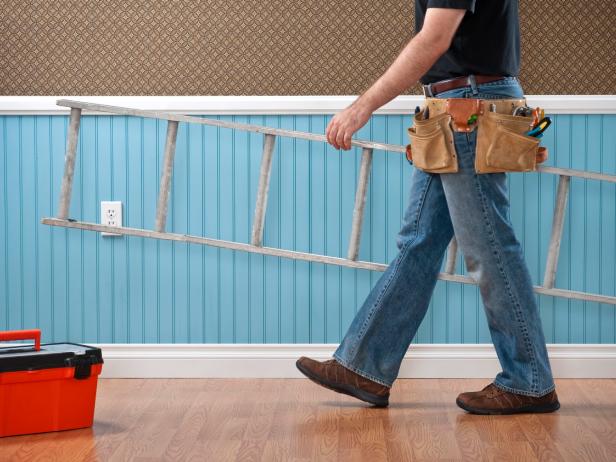Welcome to the world of commercial remodeling, where transforming spaces can be both exciting and challenging. When it comes to managing such projects, avoiding delays is paramount. Imagine the satisfaction of delivering a revamped workspace on time, or the frustration of clients facing unexpected setbacks. In this brief guide, Concept Design & Develop INC will explore some practical tips to help you steer clear of those dreaded delays in your commercial remodeling projects. From meticulous planning and efficient resource allocation to clear communication and contingency plans, we’ll cover the essentials to keep your projects running smoothly. So, let’s dive in and make your remodeling endeavors a success!
Thorough Planning:
Imagine you’re about to embark on a commercial remodeling project, whether it’s transforming an office space, revamping a retail store, or renovating a restaurant. Just like a seasoned captain plans their voyage before setting sail, you must lay a strong foundation for your project’s success with meticulous planning. Consider the array of commercial remodeling services available to you as part of this planning process. Start by defining the project’s scope—what aspects need attention and what can remain untouched. Establish a realistic budget to avoid potential financial hurdles halfway through the project. Think about the timeline; how long should this endeavor reasonably take, taking into account possible delays or unforeseen issues? It’s wiser to complete the project ahead of schedule than to fall behind. Additionally, pay attention to the logistical details. Consider the materials, labor, and equipment required. Ensure they are readily available or plan ahead for any necessary orders. Thorough planning is akin to creating a navigation chart before setting sail; it keeps your project on a steady course, minimizes surprises, and paves the way for a successful commercial remodeling venture.
Detailed Schedule:
Think of a detailed schedule in commercial remodeling like a GPS for your project. It’s the roadmap that ensures everyone involved knows where they’re going and when they need to get there. Imagine you’re renovating a retail space. You have carpenters, electricians, plumbers, and painters all working together. Without a clear schedule, chaos could reign. The electrician might show up before the walls are ready, or the painters might arrive too late to finish on time. That’s not a recipe for success. A detailed schedule, on the other hand, spells out who does what, when, and for how long. It helps you avoid conflicts and overlapping tasks, ensuring each step of the project flows seamlessly into the next. But remember, it’s not enough just to create the schedule; you have to stick to it. Regularly update and monitor it to keep everyone on the same page. If changes are necessary, communicate them promptly to avoid surprises. In essence, a detailed schedule isn’t just about managing time; it’s about orchestrating all the moving parts of your commercial remodeling project to harmonize and hit the right notes for a successful outcome.

Resource Allocation:
Resource allocation in commercial remodeling is like playing a game of chess. You need to strategically place your resources—materials, tools, and labor—where they matter most to maximize efficiency. Understanding the benefits of commercial remodeling for businesses is essential before embarking on such a project. Imagine you have a limited number of skilled carpenters and a tight budget. You wouldn’t want them idly waiting around while the materials are delayed or the electrician hasn’t finished their part, right? So, here’s the deal: before you start swinging hammers or laying bricks, assess your project’s needs thoroughly. Calculate the quantities of materials required and when you’ll need them. Ensure you have the right tools and equipment on-site at the right time. And don’t forget about your workforce; assign tasks according to their skills and the project’s timeline. Resource allocation isn’t just about avoiding bottlenecks; it’s about optimizing your resources to keep the project moving smoothly. It’s a bit like a puzzle—each piece (or resource) has its place and time in the grand picture of your commercial remodeling project. Get that puzzle right, and you’re on your way to a successful, timely completion.
Skilled Workforce:
- Expertise Matters: When it comes to commercial remodeling, having a skilled workforce is like having the right tools for the job. Their expertise and experience can make all the difference.
- Specialization: Seek professionals who specialize in commercial remodeling. They understand the unique challenges and regulations that come with commercial spaces, which can save you time and money in the long run.
- Quality Assurance: Skilled workers are more likely to deliver high-quality results. This reduces the need for costly rework and ensures the project stays on track.
- Efficiency: Experienced craftsmen are more efficient. They know the best techniques, shortcuts, and how to avoid common pitfalls, which can significantly speed up your project’s timeline.
- Problem Solvers: Challenges will inevitably arise during remodeling projects. Skilled workers are better equipped to handle these challenges, troubleshoot effectively, and find creative solutions without causing delays.
- Adherence to Regulations: Commercial spaces often have strict building codes and regulations. Skilled workers are well-versed in these requirements, ensuring your project stays compliant and doesn’t encounter unexpected setbacks.
- Communication: A skilled workforce is more likely to communicate effectively. They’ll keep you informed about progress, potential issues, and any changes needed, which helps you make informed decisions.
- Risk Reduction: Hiring skilled workers reduces the risk of costly mistakes or accidents. This not only saves time but also ensures the safety of everyone involved.
- Client Satisfaction: Ultimately, a job well done by a skilled workforce leads to satisfied clients. Happy clients are more likely to refer you for future projects, contributing to your business’s success.
Clear Communication:
Imagine you’re conducting a symphony, but instead of instruments, you’re orchestrating a team of contractors, designers, and suppliers in your commercial remodeling project. Clear communication is the conductor’s baton that ensures everyone plays in harmony. Exploring commercial remodeling ideas for a showroom can be an exciting aspect of the project. First and foremost, it’s essential to establish open and honest communication channels from the get-go. Make sure everyone on your team knows how to reach you and each other, whether it’s through regular meetings, emails, or phone calls. Then, set the tone for transparency. Encourage your team to report issues or concerns immediately. Small problems can snowball into major delays if left unaddressed. Also, keep all stakeholders in the loop, including the client. Share project updates, changes, or potential delays promptly. This not only builds trust but also allows for better decision-making when unexpected issues arise. Lastly, document everything. From contracts to change orders, having a clear paper trail ensures that there’s no room for misunderstandings. In essence, clear communication in commercial remodeling is like the rhythm section of your project. It keeps everyone on beat, reduces misunderstandings, and helps you steer clear of costly delays, ensuring a successful and harmonious project from start to finish.

Contingency Planning:
Think of contingency planning as your project’s safety net, the “Plan B” for when things don’t go as smoothly as expected during commercial remodeling. Imagine you’re on a cross-country road trip. Even with a meticulously planned route, you’d still bring a spare tire, right? That’s your contingency plan. Start by identifying potential risks and challenges that could derail your project. It could be anything from unexpected weather delays to material shortages or subcontractor issues. Once you’ve identified these potential roadblocks, brainstorm solutions and create backup plans. Having these contingencies in place is like having a toolkit to handle surprises. If, for instance, there’s a delay in material delivery, your backup plan might involve temporarily shifting the workforce to another task or securing materials from an alternate supplier. But remember, a contingency plan isn’t a “set it and forget it” document. Continuously assess and update it as your project progresses and new risks emerge. By being proactive and ready for the unexpected, you’ll be better equipped to keep your commercial remodeling project on track and avoid unnecessary delays.
Quality Control:
Think of quality control as the critical eye that ensures your commercial remodeling project not only finishes on time but also meets or exceeds the client’s expectations. Exploring cost-effective commercial remodeling solutions can be an integral part of maintaining high-quality standards. Throughout your project, pay close attention to the details. Inspect the work at various stages to ensure it aligns with the project’s specifications and industry standards. This diligent oversight helps catch any errors or inconsistencies early, preventing them from snowballing into major issues later on. Also, don’t hesitate to involve the client in quality control. Their feedback and approval at key milestones can help prevent costly rework and ensure their vision is being realized. Remember, quality control isn’t about nitpicking but about delivering a polished, professional result. It’s like the chef’s final taste test before serving a gourmet dish. By maintaining high standards and addressing any issues promptly, you’ll not only avoid delays but also earn the satisfaction and trust of your clients, setting the stage for future success in commercial remodeling.
Document Everything:
- Clear Records: Think of documentation as your project’s memory. Keep clear and organized records of all project-related documents, including contracts, permits, invoices, and change orders.
- Accountability: Documenting agreements and decisions ensures everyone is on the same page and accountable for their responsibilities. It’s like having a paper trail that can resolve disputes or misunderstandings.
- Regulatory Compliance: In commercial remodeling, there are often legal and regulatory requirements. Keeping meticulous records helps you stay compliant and avoid legal hassles or delays.
- Progress Tracking: Documenting project progress allows you to track how well you’re sticking to the schedule. It’s a bit like marking off destinations on a road trip – you know where you’ve been and how far you have to go.
- Problem Solving: When issues arise, document them. This is akin to diagnosing a problem in your car. You need to understand the issue before you can fix it efficiently.
- Communication History: Keep records of all project-related communications, including emails, meeting notes, and phone calls. This helps you recall past decisions and discussions, avoiding misunderstandings.
- Change Orders: If there are any changes to the project scope, document them clearly with change orders. It’s like revising your itinerary during a trip; everyone needs to know the new plan.
- Client Satisfaction: Proper documentation also plays a role in client satisfaction. When you can provide a thorough record of the project’s journey, it instills confidence and trust.
- Reference for Future Projects: Finally, good documentation serves as a valuable resource for future projects. Lessons learned from past jobs can help you refine your processes and avoid common pitfalls.

FAQ’s:
How do you overcome delays in a construction project?
To overcome delays in a construction project, implement proactive planning, maintain clear communication, and have contingency plans in place for unexpected issues.
What are the top 10 universal delay factors in construction projects?
The top 10 universal delay factors in construction projects include design changes, weather conditions, inadequate project planning, labor shortages, material shortages, site conditions, subcontractor delays, regulatory approvals, financial issues, and unexpected site discoveries.
What is a good way to reduce project duration?
To reduce project duration, consider overlapping certain project phases, employing experienced and efficient labor, and optimizing resource allocation.
How can I speed up my construction project?
Speed up your construction project by effective project planning, streamlined communication, optimal resource allocation, and minimizing rework through quality control.
How do you manage time in a construction project?
Manage time in a construction project by creating a detailed schedule, regularly monitoring progress, and promptly addressing delays and changes.
CONCLUSION:
In conclusion, successfully avoiding delays in commercial remodeling projects boils down to meticulous planning, efficient resource allocation, clear communication, proactive contingency planning, and rigorous quality control. By implementing these project management tips, you can not only meet deadlines but also exceed client expectations, build a solid reputation, and ensure the smooth and timely completion of your commercial remodeling endeavors. Remember, time is money in this industry, and by following these strategies, you’ll be better equipped to deliver exceptional results on schedule, every time.



